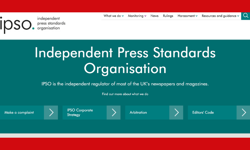These days David Montgomery, the former chief executive of the Mirror Group, looks at the UK national newspaper industry from a more detached perspective – from abroad.
The former editor of both the News of the World and the Today newspaper has launched himself into the task of becoming one of the biggest newspaper publishers and owners in continental Europe with his Mecom group, and has left the British media behind.
But he still believes that UK newspaper publishers have not received sufficient recognition for what they have achieved. The investment opportunity he has spotted is taking some of the constant stream of innovations from the UK industry and trying to development local variants in the largely traditional, and unreconstructed, European industry.
"Everyone has to recognise, and we all do recognize, that there is gentle decline (in circulations) and you have to re-invigorate and re-invent. Publishers don’t get enough credit for actually being very energetic in this field and they have been creative," explains Montgomery. He is impressed by everything from the rise of free newspapers and the move to tabloid formats to new launches and new sections.
The facts about the UK newspaper industry are clear. In the face of ever-increasing electronic competition, national newspapers have seen their circulations fall by 13.6 per cent over the last decade, with dailies down by 10.9 per cent and Sundays down 15.8 per cent. Readerships are down even more, 20.7 per cent over the past 10 years, with dailies down by 17.8 per cent and Sundays 23.1 per cent. Unsurprisingly, national newspapers have seen their share of advertising decline for the last six years.
Yet at the same time, as Montgomery acknowledges, real efforts have been made, if not to reverse the decline, then to reduce its impact. Apart from size changes, these have included DVDs, PDF downloads, podcasts, stand-alone supplements, moves into television and expansion into magazines.
But the current post DVD frenzy of wall-charts, movies posters and classic photographs is perhaps the most dramatic example of the creativity of newspaper publishing executives trying to battle as hard as they can against the structural decline in the market.
Wall-charts
The battle of the wall-charts, initiated by the Guardian, is also a perfect case study of how quickly any innovation is picked up and copied and adapted by rivals.
Guardian marketing director Marc Sands says the wall-chart week was the paper’s most successful promotion in recent years. "Nothing has lifted weekday sales like octopus, squid, dolphins, whales and birds of prey," Sands explained. The wall-charts are believed to have lifted sales of the paper by around 40,000 at the outset before tailing off as almost everyone else jumped on the bandwagon.
Sands also concedes that the top five sales days in the Guardian’s history have just happened to have coincided with the distribution of a DVD. The great advantage of wall-charts is that they are considerably cheaper than either CDs or DVDs, and appeal to parents as well as the young.
Now that every schoolroom and children’s bedroom in the country has been papered with squid and garden birds the phenomenon has probably run its course - at least for now.
What, after all, do you do with the charts when every potential wall is covered?
Cue the re-appearance of the CD and DVD this autumn and winter even though the cost of acquiring each new reader can range from £3.50 to as much as £6 when all the costs are included – rights, production, promotion and merchandising in the shops. And some people just want the DVD and have even been seen throwing the paper away.
Special promotions such as DVDs, wall-charts and the next big thing which hasn’t been invented yet, will all continue to have a place in the armoury of newspaper marketing directors. But, apart from the cost, such devices have to be used sparingly, otherwise the law of diminishing returns quickly starts to set in.
The real challenge
The greatest challenge for all newspapers is more fundamental than dreaming up new gee-whizz promotions: it is nothing less than coming up with an effective publishing strategy that addresses the threat of the internet and mobile communications.
The Guardian has undoubtedly led the way with Guardian Unlimited and the excellent MediaGuardian, but the paper’s approach to the new world cannot provide much of a template for most commercial newspapers. MediaGuardian, with a staff of 10, simply would not exist in its present form if it had had to make a normal commercial return from the outset.
Ironically, it is the Daily Telegraph, in the past one of the most conservative publications in every sense of the word, which is making some of the most radical changes in order to address the new world.
Increasingly, the key will be to develop a publishing strategy that seamlessly provides news and information in whatever form or format the consumer wants it.
Experimentation throughout the industry is already throwing up workable models. For instance, Johnston Press, the regional group, set up "a newsroom of the future" in Preston and the lessons learned are now being rolled out to 70 news centres throughout the group.
Johnston has trained video journalists and they are expected to file words and video packages. The newsdesk decides whether journalists file for the paper or straight onto the web or via SMS messages. As a result, Johnston Press chief executive Tim Bowdler says he is not worried about the perceived online threat to newspapers.
"We have not seen any great evidence of loss of circulation in Preston, where we have trialled this. But there has been a tripling of page impressions since the launch and people are staying online longer," Bowdler says.
The Telegraph is going down a similar route in its new multimedia headquarters in Victoria. Will Lewis, who was responsible for organising the move and producing the Telegraph’s own newsroom of the future, is clear about what has to be done. Lewis, now editor of the Daily Telegraph at the age of 37, has clearly sold his digital vision of the future of newspapers to the Telegraph owners, the Barclay brothers.
Lewis believes that readers want a multitude of news services depending on the time of day, and that methods of delivery should range from print and the web to video and audio news.
"We don’t believe newspapers are dead, but it’s clear there are structural rather than cyclical challenges in the industry and not changing isn’t an option," Lewis believes.
The Times, which is planning a redesign of its website, has already a downloadable PDF file at 5pm with business news and comment. Further integration of the paper’s print and web operations are also on the way.
Battle of the frees
Change luckily can take many forms and they don’t all have to involve the internet or podcasts. Dramatic change can just as easily involve good old-fashioned print, as the rise of the free newspaper phenomenon has demonstrated.
The launch of the free newspaper wars in London, a battle that will rapidly spread to more cities around the UK, probably amounts to the boldest publishing initiative of the year.
It is the battle that has everything. Murdoch against Rothermere and, with it, echoes of the past and the bitter fight between Robert Maxwell and the old Viscount Rothermere over the launch of the London Daily News.
As a result, the commuters of London could scarcely be better served with free newspapers. In the morning, there is Metro and the more specialist CityAM. Then, in the afternoon, Associated’s London Lite fights it out with News International’s thelondonpaper, with the Evening Standard trying to hold onto the paid-for higher ground.
The battle of the frees in the capital has had the effect of turning the clock back by 20 years, with carriages full, once again, of people reading newspapers.
It is the most compelling argument for the thesis that newspapers are a long way from being dead yet. Whether anyone can make any money out of such a strategy, as opposed to defending the patch against invasion, remains a very open question.
It is very difficult to see what else Associated Newspapers could have done – other than to run up the white flag in the face of the Murdoch invasion. The strategy of flooding central London with copies of London Lite, combined with a move up-market for the Evening Standard – at least in terms of branding - is a brave move.
It was particularly courageous of Associated to raise the cover price of ‘London’s Quality Newspaper’ by 25 per cent to 50p to differentiate itself in the market from the mass of frees.
The likely consequence, in the short-term, for the Evening Standard is likely to be a decline in sales. Vendors are already complaining bitterly about the difficulties of selling a newspaper for 50p as young girls flock around giving papers away for free.
The hope - and it may well be a realistic one – is that the Standard can claw its way back with quality journalism to people who find the frees unacceptably flimsy.
What does David Montgomery make of the UK’s national newspapers as he shuttles around between Denmark, Norway, Germany, Holland, Poland and Lithuania? Nowadays, the former tabloid editor spends most of his reading time with the FT, the Times, the Telegraph and the Independent as befits an aspiring newspaper tycoon ...
The Telegraph, he believes, needs a stronger features section Monday to Friday and the Independent’s campaigning front page "has run out of steam." The Sun and the Daily Mirror seldom surprise him and popular papers "should surprise you."
He reserves most praise for the Times. "It’s the best general newspaper. I think there is real talent there that is manifested right through the paper – news, business, features. They have really seasoned executives leading all the sections and I think it is a super paper," says David Montgomery.
FEATURE
No surrender!
Newspapers might be in long term structural decline, but they are not throwing in the towel. Indeed, the energy and creativity with which the press is fighting its corner is breathtaking. Raymond Snoddy looks at how they are battling for every last reader, both on and offline.










